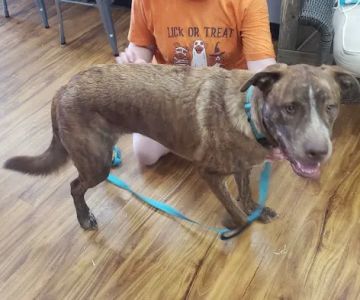How to Teach Your Dog to Follow Commands Without Treats
- Understanding Dog Training Without Treats
- Building a Strong Bond With Your Dog
- The Importance of Consistency in Dog Training
- Using Positive Reinforcement Without Treats
- Examples of Effective Commands for Dogs
- Common Mistakes to Avoid in Training
1. Understanding Dog Training Without Treats
Training your dog without treats is entirely possible, and in many ways, it can be more effective than traditional treat-based methods. While treats are often used in dog training to reward good behavior, it’s important to know that positive reinforcement doesn’t always need to be food-based. A dog’s attention and willingness to obey can be nurtured through other types of rewards, such as praise, toys, or even affection.
When you train your dog without treats, you're teaching them to respond to you for reasons other than just getting a reward. This can foster a deeper bond and help your dog respond more attentively, understanding that the true reward is in the connection between the two of you, not just a snack. Over time, this method can make your dog more reliable and focused, as they will be learning to follow commands for intrinsic reasons rather than external motivation.
2. Building a Strong Bond With Your Dog
One of the key factors in training your dog without treats is creating a strong, trusting relationship. Dogs that feel secure and connected to their owners are more likely to follow commands, regardless of the promise of food. Spend quality time with your dog, engage in fun activities, and establish a routine. Dogs thrive on attention and consistency, and when they trust you, they are more likely to be motivated to learn and obey.
Start by creating opportunities for positive interactions with your dog. This could be anything from simple playtime, walking, or even just sitting quietly together. Positive reinforcement, in the form of affection, verbal praise, or even a belly rub, can help strengthen the bond. Remember, dogs love to feel loved and cared for, so when they follow a command, make sure to praise them with enthusiasm to encourage the desired behavior.
3. The Importance of Consistency in Dog Training
When teaching your dog to follow commands without treats, consistency is key. Just like any learning process, dogs need clear and consistent cues to understand what’s expected of them. If you ask your dog to sit one day and reward them with affection, but then ignore them the next day for the same behavior, they’ll become confused about what’s expected of them. To ensure your dog learns effectively, remain consistent in your approach, your tone, and your timing.
Use the same verbal cues, body language, and gestures every time you give a command. The more predictable and structured the training is, the quicker your dog will learn. It’s also important to keep training sessions short and sweet—dogs, especially puppies, have limited attention spans. Aim for short bursts of training (5-10 minutes), and end each session with a positive interaction to reinforce the learning process.
4. Using Positive Reinforcement Without Treats
Positive reinforcement isn’t limited to food rewards. Dogs also respond well to verbal praise, toys, and physical affection. When training without treats, you can reward your dog with encouraging words like "good boy" or "well done." Dogs love hearing positive reinforcement, and it motivates them to continue performing the desired behavior. Use a happy, upbeat voice to convey excitement and pride in their progress.
Another powerful method is using toys as rewards. For example, you can engage your dog in a game of fetch or tug-of-war when they follow a command successfully. The excitement of play can act as a strong motivator for many dogs, especially active breeds that love engaging in interactive games.
5. Examples of Effective Commands for Dogs
Start with simple commands that are easy for your dog to learn, such as "sit," "stay," or "come." As your dog masters these basic commands, you can gradually introduce more complex tasks like "heel," "roll over," or "leave it." When practicing these commands, always use clear, consistent cues, and reward your dog immediately after they perform the action correctly. Over time, your dog will begin to understand what you’re asking of them and will be more likely to respond without the need for treats.
It’s also important to practice these commands in various settings, from the quiet of your living room to outdoor environments with more distractions. This will help your dog learn to follow commands in different contexts, reinforcing their obedience and responsiveness to you no matter where you are.
6. Common Mistakes to Avoid in Training
Even experienced dog owners can make mistakes during training. One common mistake is giving inconsistent cues or not following through with rewards. If you ask your dog to do something and don’t consistently reward or praise them for following through, they may lose interest or fail to understand the expected behavior. Another mistake is being too lenient or giving up too soon. Training takes time and patience, so be persistent, even if your dog doesn’t get it right away.
Lastly, don’t get frustrated with your dog. If they aren’t responding right away, it may be due to distractions, lack of understanding, or even just their mood. Keep your training sessions positive, avoid negative reinforcement, and stay patient. With time and dedication, you will see progress, and your dog will become more attuned to following your commands without needing treats as motivation.
If you're looking for more tips on dog training, including the best methods for teaching your dog without treats, visit Hidden Brook Veterinary for expert advice and resources on pet care.











